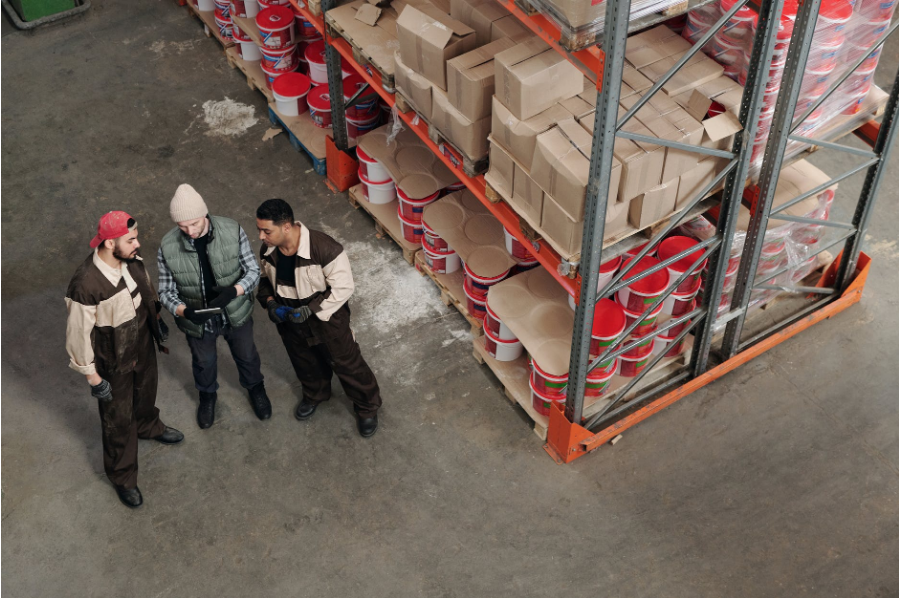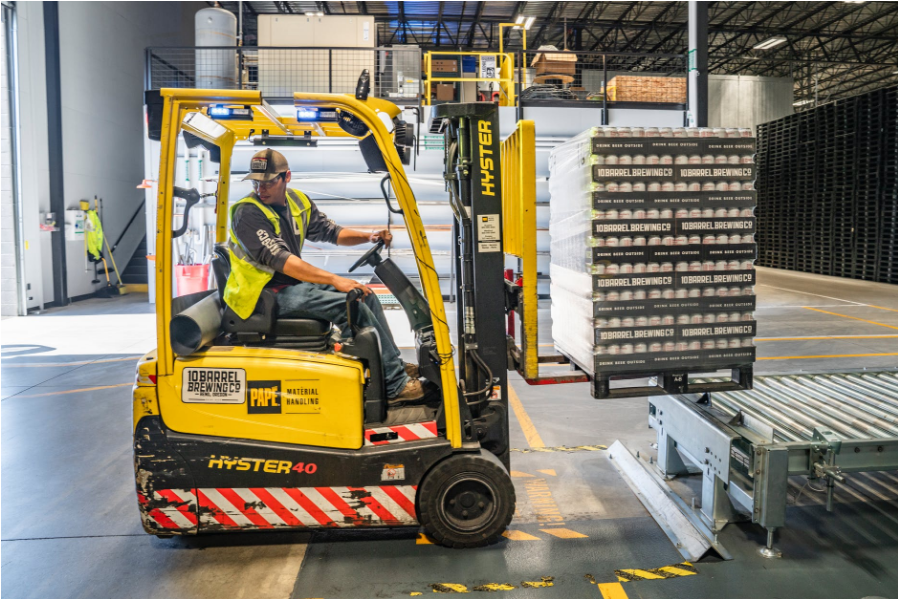The rampant pandemic has made life tougher for businesses across many industries as businesses are left questioning: “How do we ensure timely production and delivery of our products?”
The disruption caused by national lockdowns and health emergencies has led companies to experience weakened supply chains, or worse, shutting down their warehouses.
As more managers and business owners look for ways to ensure continuous sales, there is no denying the fact that the pandemic has changed the warehousing and fulfillment industry across the globe.
According to the Institute for supply chain management, approximately 75% of the surveyed companies stated that they were experiencing supply chain disruptions because of COVID-19 related restrictions.
With restrictions on imported goods, a shortage of ground resources, and limitations on manufacturing operations, managing warehousing and fulfilment is becoming increasingly difficult for companies today.
This unprecedented situation has not only created greater uncertainty in the supply chain and warehousing industry, but it also compels both tenants and developers to ensure quick and reliable warehousing solutions if they want to survive.
That being said, the future is bright for the warehousing sector as more businesses realize its importance in ensuring continuity and profitability.
COVID-19 Impact On The Warehousing Sector

The global warehousing market was recorded as a $451 billion industry in 2019. However, industry growth is likely to slow to a CAGR (compound annual growth rate) of -0.1% as the world combats a pandemic – which also reduces the rate of consumption with already tight pricing and slimming profit margins.
However, despite the gloomy outlook, warehousing and e-commerce together are still doing well with a predicted substantial growth in their market share in the coming future. By 2021, warehousing is predicted to not only recover but also grow to reach $582.9 billion by 2023 as more businesses go online and start selling to remote buyers.
In a crisis, investors are likely to pull their money out of emerging markets, but this doesn’t seem to be the case with warehousing as most players are hanging in there; and rightly so.
While investors do expect demand and supply to fluctuate, declining demand is likely to be matched by supply decreases in the long run; and smaller developers might not have access to the capital required to rebuild.
Consequently, many developers and manufacturers are likely to go back to re-shoring and near sourcing their warehouses closer to consumer demand (even more so for essential goods such as medicines and PPE products).
Coupled with attempts to diversify sourcing, these changes will facilitate the growing demand for regional industrial facilities and associated logistics that may pressurize tenants in the short term. However, this could also potentially reduce container flows at major gateway ports, thus lowering warehouse demand at these spots.
Additionally, given the uncertainty and disruption of their businesses, companies may increase their inventory levels, which will ultimately boost the demand for warehousing space.

Changes in Consumer Patterns to Accelerate Warehousing
The COVID-19 pandemic has accelerated the pace at which brick-and-mortar businesses retail their products online, increasing the virtual demand for essential as well as non-essential goods.
That said, the need for essential items such as hygiene and sanitation products continues to skyrocket, encouraging many tenants to shift to grade A spaces. Apart from that, bulk-buying trends are on a steady, with consumers stocking up on groceries and staples while at home.
As such, new companies entering the market will likely dive into agro-warehousing as demand for cold storage and food supply chain solutions continues to rise.
Other key warehousing trends include:
Shift Towards Higher Inventory
The decline in economic activity has resulted in lesser warehousing volumes in the short term. However, trends show that slowly as warehouses get used to the new normal, they will find that higher inventory volumes are better for business.
Greater Reliance On Third-Party Warehouses
Retailers and manufacturers continue to view extensive staffing as a risk rather than an advantage, and employment is on the decline as employees are removed from payrolls. As such, these businesses are likely to turn to third-party warehouse providers rather than in-house fulfillment.
A reliable warehousing partner can help you process quick and efficient order fulfillment.
Greater Flexibility
Manufacturers and retailers must be flexible to changing market trends that allow them to fulfill customers’ needs through existing warehouse operations.
This has led to the rise of warehouse spaces tech that service many clients within their space – receiving, handling, storing, and shipping for all of them simultaneously instead of contracting only one business at a time.
Source: Pexels
Short-Term Contracts
Generally, companies prefer three to ten-year-long contracts. However, in current circumstances, that could leave them vulnerable to insufficient (or excessive) inventory and warehousing capacity in the wrong markets. So, for now, many businesses have turned to quick and efficient smaller contracts with their warehouses.
Growth Of On-Demand Warehousing
On-demand warehousing enables tenants and developers to have greater visibility into their inventory stores. These stores are built in several locations throughout a warehousing network.
Increase In E-Commerce Platforms
COVID-19 has sparked a massive shift from physical retail stores to e-commerce platforms. This has led to a greater need for warehousing that can facilitate the claims for same-day shipping and two-day shipping claims by online retailers.
Increasing Automation Of Warehouses
This is a pre-existing trend that is likely to accelerate under current circumstances.
Smart fulfillment warehouses utilize IoT (Internet of Things) to monitor and track products through sensors, radio frequency identification tags, and wearables. Not only does this helps to boost efficiency, but it also speeds up processes across the supply chain.
Thus, in the future, developers will be able to accelerate their delivery time and increase the accuracy of fulfillments thanks to automation.
Green Warehousing
Manufacturers are also shifting their priorities to sustainability in a bid to create long-lasting solutions that are also environmentally friendly.
Many fulfillment warehouse tenants today have energy management systems already in place that enable them to oversee their utilities without the need for human intervention.
By integrating timers, gauges, and thermostats for gas, heat, electricity, and water, these warehouses will soon define the best practices of zero-waste warehousing – a fundamental aspect of adopting more eco-friendly practices.
Demand For Warehousing Space Is Set To Increase
With the overrunning of stocks, there is an influx in demand for essential goods warehouse spaces for hygiene products, food, and healthcare.
Companies dealing in non-essential goods are in dire need to restart their operations. They are stocking up on inventory, which will increase their requirement for warehousing space.
[button url=https://www.scmdojo.com/warehouse-space-optimization/ size=16 icon_size=16]Warehouse Space Optimization: 17 Tactics That Can Be Used to Improve Space[/button]
Source: Pexels
Opportunities on the Horizon: What The Future Holds
The manufacturing sector continues to face challenges as companies fail to produce. In terms of international trade – with countries implementing protective policies – globalization could come to a standstill, leaving opportunities for growth for local warehouses.
A reliable warehousing partner can help you process quick and efficient order fulfillment, so you can meet your consumers’ needs and gain their trust.
Looking for a way to assure customers you’re prepared to facilitate them through thick and thin? Get in touch with us. Here at Warehousing and Fulfillment, we offer cost-effective solutions that help you instantly screen vendors – so you can find the perfect match.
Want to learn more? Get a quick rundown on how it works, where we show you how we screen our warehousing and fulfillment partners to help you make the best decisions.
About the author
Will Schneider is the founder of InsightQuote, a match-making service for B2B services, and writes informative posts about fulfillment services at Warehousing And Fulfillment. He is passionate about helping businesses find the right solutions to improve their operations. When not working, Will enjoys coaching youth basketball.
About the Author- Dr Muddassir Ahmed
Dr MuddassirAhmed is the Founder & CEO of SCMDOJO. He is a global speaker, vlogger and supply chain industry expert with 17 years of experience in the Manufacturing Industry in the UK, Europe, the Middle East and South East Asia in various Supply Chain leadership roles. Dr. Muddassir has received a PhD in Management Science from Lancaster University Management School. Muddassir is a Six Sigma black belt and founded the leading supply chain platform SCMDOJO to enable supply chain professionals and teams to thrive by providing best-in-class knowledge content, tools and access to experts.
You can follow him on LinkedIn, Facebook, Twitter or Instagram









